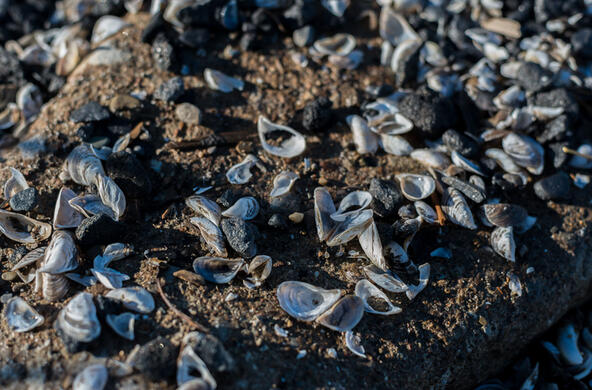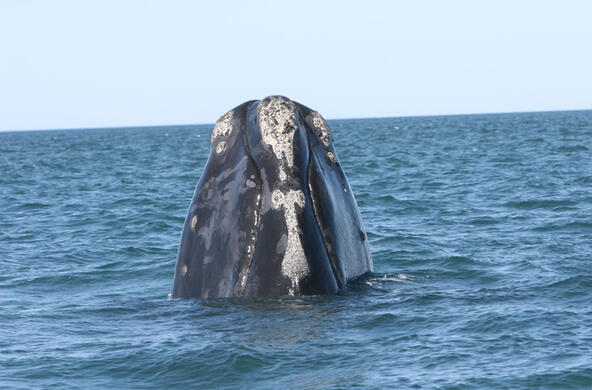Testimony of David L. Strayer
U.S. House of Representatives Committee on Natural Resources
Subcommittee on Water, Power, and Oceans
23 June 2016
Chairman Fleming, Ranking Member Huffman, and members of the Subcommittee, thank you for this opportunity to testify on H.R. 5430 and discuss invasive species with you. I am David L. Strayer, a Distinguished Senior Scientist at the Cary Institute of Ecosystem Studies, a leading independent ecological research institute in Millbrook, New York. I am a freshwater biologist with a Ph.D. from Cornell University and 35 years of research experience on freshwater ecosystems. I have been studying invasive species and their impacts for more than 25 years.
Based on my reading of H.R. 5430, and a large body of scientific knowledge about invasive species, I believe that H.R. 5430 is likely to contribute to the spread of harmful invasive species, and thereby lead to expensive, long-lasting problems for natural ecosystems and the economic activities that depend on them. Specifically, I see three weaknesses in the bill: (i) it assumes that the Lacey Act lists all species that might be harmful, so that considering species listed under the Lacey Act is sufficient to prevent harmful invasions; (ii) it assumes that diversions that are “closed” or that link public water supplies will prevent invasive species from reaching open waters, even under extreme weather conditions; (iii) it ignores the potential for genetic augmentation to increase the invisibility and impacts of invasive species that are already present. In the next few pages, I will explain why I reached these conclusions.
Over the past 25 years, my colleagues and I watched a single invasive species, the zebra mussel, completely transform the Hudson River20-23. This European shellfish appeared in the Hudson in 1991, arriving via ballast water and canals. By the end of 1992, the zebra mussel population had grown to the point that its weight exceeded the combined weight of all other consumers in the river – fish, shellfish, worms, insects, zooplankton, and bacteria. The mussels were filtering a volume of water equal to all of the water in the river each day. As a consequence, the amount of phytoplankton in the river fell to just 20% of its former levels, where it has remained to the present time. Phytoplankton supports much of the river’s food web, so the loss of phytoplankton led to large declines in many species of native fish and shellfish and widespread changes in water chemistry. Zebra mussels changed nearly everything that we measured about the Hudson’s ecosystem. In addition to these ecological effects, zebra mussels clogged intakes of drinking water plants and power plants, and fouled boats and docks up and down the river, leading to substantial economic damages. There is currently no prospect for controlling the zebra mussel or its effects in the Hudson.
Our group also documented large effects of other invaders. For example, the water-chestnut, a European plant that was deliberately brought to the US as an ornamental plant, now covers more than 1000 acres of the Hudson, preventing swimming, boating, and fishing. It crowds out native plants, strips all of the oxygen from the underlying water, and completely changes the kinds of animals that live in the river’s shallows 2,6. And the zebra mussel and water-chestnut are far from the only invaders in the Hudson – in total, we have found more than 100 species of non-native plants and animals to be established in the fresh waters of the Hudson and its tributaries12, with more arriving all the time. Many of them have strong ecological or economic impacts.
All across the country, freshwater ecosystems and the economic activities that depend on them are being threatened by invaders. Nutria, a large, aquatic rodent from South America, have destroyed tens of thousands of acres of wetlands along the Gulf Coast and Chesapeake Bay15, aggravating already-severe problems with coastal erosion; diseases and parasites like whirling disease, lampreys, and viral hemorrhagic septicemia have killed countless sport and food fish from the Great Lakes to the Rocky Mountains1,4; parasites carried by imported snails kill waterfowl in the Upper Midwest by the tens of thousands17; invasive plankton degrade water quality in many of our nation’s lakes, reducing their value as sources of recreation and drinking water25; invasive plants and algae clog waterways ranging from lakes to mountain streams from Florida to California, harming fish, wildlife, and human recreation8,20; non-native fishes and crayfishes crowd out or eat native species, leading to problems ranging from forcing more native species onto the endangered species list to losses of valuable fisheries4,20; and species like zebra and quagga mussels clog pipes and raise rates for water users from coast to coast13,19. As even this brief and incomplete accounting shows, almost every congressional district and every American is affected by freshwater invasive species, and even more will be affected in the future if we allow new invaders to arrive and existing invaders to spread.
We do not have good estimates of the aggregate ecological and economic damage that is being done by these invaders, but all credible estimates from the US and elsewhere suggest that costs in the US are in the range of billions of dollars per year3,14,25,26. These costs are paid every time one of your constituents writes a monthly check to their utility company that includes a little extra for zebra mussel control or more elaborate drinking water treatment, pays extra local taxes to build shore defenses to protect their land from eroding away, loses property value when their local lake is choked by an invasive plant, has to drive a little further to find a decent place to swim or fish with their family, or buys seafood imported from some distant part of the world instead of locally caught fish. And they are paid by the large utilities that must pay for more frequent inspection and cleaning of their intake infrastructure, by campground owners, charter boat operators, and outfitters who can no longer attract customers to their damaged lakes and rivers, and by a myriad of other businesses, large and small, that depend in some way on our freshwater resources.
Unfortunately, invasive species and the problems they cause usually are very difficult to control or manage once they are established. I often hear that invasive species aren’t really a serious problem, because we can simply control them, or even exploit them for economic benefit, if they become a problem. This is an appealing idea, but many decades of experience with many invaders show that easy control usually is a pipe dream. In fact, control or eradication of established invaders is costly and rarely successful16 except in special circumstances (e.g., when action is taken very early in the invasion, or when the invader is confined to an island). Invaders, once established, have to be regarded in most cases as permanent or at least very long-lasting problems that we bequeath to succeeding generations. Instead, studies show that preventing invasions is much more effective and cost-efficient than trying to control invaders once they become a problem9,11.
How did we come to have so many invaders in our waters? Several specific activities have been important in spreading invasive species into our fresh waters. Some species were deliberately introduced because someone thought that they would be beneficial (common carp, water-chestnut). Some escaped from aquaculture or agriculture into open waters (Asian carps, whirling disease). Some spread through canals or diversions (sea lamprey in the Great Lakes, quagga mussel in the Southwest). Some were released from bait buckets, aquaria, or water-gardens (rusty crayfish, Chinese mystery snails). Some traveled in ballast water of commercial ships (zebra mussels, round gobies) or on recreational boats and boat trailers (Hydrilla). Some moved around on contaminated recreational equipment (rock snot). In most of these past invasions, we either didn’t understand that we were spreading invasive species, or vastly overestimated our ability to tell beneficial species from harmful ones. And although many of these past actions have caused large problems, we could, perhaps, excuse at least some of them because people didn’t understand the consequences of their well-meaning actions.
But if we didn’t understand the causes and consequences of species invasions in the past, we surely do now11,18. We know which human activities are moving species around the globe. We know that poor management of these activities is causing the rate of new invasions to rise or even accelerate in many waters. We know that a substantial number of these invasions cause large ecological and economic problems that will last for a long time and will be difficult and costly to control. We know that our best hope in combating these problems is to prevent new invasions, or at least to quickly detect and eradicate harmful new invaders.
This knowledge gives us effective tools for reducing the number and impacts of future invasions. If we want to safeguard our freshwater resources and the economic activities that depend on them, we need to continue to work to control ballast water, remove potentially harmful species from commerce, better control non-native species used in aquaculture, better educate people about the dangers of releasing species into the wild or transporting them on recreational equipment, expand the use of inspection stations at boat launches, close unused canals or erect biological barriers on them, and provide the legal framework and funding to better detect and eradicate harmful new invaders before they can spread and cause trouble. We also need to be exceedingly cautious about moving untreated water from one river basin to another.
In view of this background, we can see that H.R. 5430 poses substantial risks. We know very well that water transfers between river basins cause species invasions; Zhan et al.27 discuss many examples from around the world. Species can either be carried downstream with the water, or, depending on the nature of the diversion, may be able to swim upstream against the current. For example, the quagga mussel was carried passively through water diversions in the American Southwest and California, where it caused problems both for water users and ecosystems5. On the other hand, the Asian carps (silver carp, bighead carp) have been moving upstream through the diversion at the Chicago Ship and Sanitary Canal towards Lake Michigan, leading the Corps of Engineers to build an expensive electric barrier in the canal. Natural resource managers and sportsmen throughout the Great Lakes region are holding their breath, hoping that this barrier will keep these species from crossing into the Great Lakes and damaging fisheries.
The well-meant safeguards in H.R. 5430 to prevent species invasions may fail on at least three counts. First, many harmful invaders are not currently listed under the Lacey Act.
Although undoubtedly useful, the Lacey Act has many shortcomings in preventing invasions7, most notably that it lists just a few of the many current and future invaders than may cause harm. The current spread of quagga mussels (not a species listed under the Lacey Act) through water diversions in the Southwest and California provides a concrete example of how unlisted species can spread through water diversions and cause problems. As a result, requiring that Lacey Act species be considered does not in any way prevent water diversions from spreading harmful aquatic species.
Second, even if a diversion is designed to be closed, or transfer water only into a public water supply (as required by the bill), water infrastructure often leaks, overflows, or fails, especially during extreme events such as storms, allowing for harmful species to escape into the wild. Even small or short-lived leaks and failures may give an invasive species the opportunity to escape into open waters. For example, escapes of invasive species from aquaculture have typically occurred during storms, when ponds overflowed or dikes failed. If the restrictions in the bill are to be effective, they should explicitly require failsafe mechanisms that work on every day of every year, even during extreme weather.
Third, even if a listed species is present on both sides of a diversion, all of the genotypes (different strains) of the species may not occur on both sides of the diversion. We know that some genotypes of an otherwise benign species may be highly invasive. For example, genotypes of the common reed (Phragmites australis) were a widespread but minor part of pre-Columbian North American wetlands. However, when nearly indistinguishable Eurasian strains were brought to North America, they formed dense thickets, crowded out native plants, damaged wildlife habitat, and disrupted nutrient cycles10. Wetlands managers now spend millions of dollars each year to burn, herbicide, mow, dig up, and otherwise kill these invasive genotypes. Furthermore, the hybrids formed when new genotypes mix with existing genotypes may be even more invasive, and lead to new problems10. Thus, the transfer of new genotypes through a diversion may cause problems, even if the species already lived on both sides of the diversion.
Finally, I have to note that any invaders that are spread through the water diversions allowed under H.R. 5430 may spread beyond the immediate area of the water diversions. Once the diversion carries a species into a new river basin, it can spread throughout that new basin, or use that basin as a stepping-stone to reach even more distant waters. Thus, citizens who are far removed from the local benefits of a water diversion project may end up paying for damages caused by that project.
As a result of these considerations, I conclude that H.R. 5430 is likely to contribute to the spread of harmful invasive species, and thereby lead to expensive, long-lasting problems for natural ecosystems and the economic activities that depend on them. These problems may extend far beyond the project area of any water diversions.
Thank you for your attention.
References
1. AFS-FHS. 2014. FHS blue book: suggested procedures for the detection and identification of certain finfish and shellfish pathogens. http://afs-fhs.org/bluebook/bluebook-index.php.
2. Caraco, N.F., and J.J. Cole. 2002. Contrasting impacts of a native and alien macrophyte on dissolved oxygen in a large river. Ecol. Appl. 12: 1496-1509.
3. Colautti, R.I., et al. 2006. Characterised and projected costs of nonindigenous species in Canada. Biol. Invasions 8: 45-59.
4. Cucherousset, J., and J. Olden. 2011. Ecological impacts of nonnative freshwater fishes. Fisheries 36: 205-220.
5. Filmer, A.K. 2012. Zebra mussels and quagga mussels threaten California water systems. http://ucanr.edu/blogs/blogcore/postdetail.cfm?postnum=8566.
6. Findlay, S.E.G., et al. 2014. Magnitude and patterns of change in submerged aquatic vegetation of the tidal freshwater Hudson River. Estuaries and Coasts 37: 1233-1242.
7. Fowler, A.J., et al. 2007. Failure of the Lacey Act to prevent US ecosystems against animal invasions. Front. Ecol.Environ. 5: 353-359.
8. Kumar, S., et al. 2009. Potential habitat distribution for the freshwater diatom Didymosphenia geminata in the continental United States. Front. Ecol. Environ. 7: 415-420.
9. Leung, B., et al. 2002. An ounce of prevention or a pound of cure: bioeconomic risk analysis of invasive species. Proc. Royal Soc. B269: 2407-2413.
10. Lockwood, J.L., et al. 2013. Invasion ecology, 2nd edition. Wiley-Blackwell.
11. Lodge, D.M., et al. 2006. Biological invasions: recommendations for US policy and management. Ecol. Appl. 16: 2035-2054.
12. Mills, E.L., et al. 1996. Exotic species in the Hudson River basin - a history of invasions and introductions. Estuaries 19: 814-823.
13. Nalepa, T.F., and D.W. Schloesser (editors). 2014. Quagga and Zebra Mussels: Biology, Impacts, and Control, 2nd edition. CRC Publishers.
14. Pimentel, D., et al. 2005. Update on the environmental and economic costs associated with alien-invasive species in the United States. Ecol. Economics 52: 273-288.
15. Pyke, C.R., et al. 2008. Current practices and future opportunities for policy on climate change and invasive species. Conserv. Biol. 22: 585-592.
16. Rejmánek M., et al. 2005. Ecology of invasive plants: state of the art. Pages 104-161 In: Mooney HA, Mack RN, McNeely JA, et al. (Eds). Invasive alien species: a new synthesis. Washington, DC: Island Press.
17. Sauer, J.S., et al. 2007. Finding the exotic faucet snail (Bithynia tentaculata): investigation of water-bird die-offs on the Upper Mississippi River National Wildlife and Fish Refuge. U.S. Geol. Surv. Open-File Report 2007-1065.
18. Simberloff, D. 2013. Biological invasions: what everyone needs to know. Oxford University Press.
19. Strayer, D.L. 2009. Twenty years of zebra mussels: lessons from the mollusk that made headlines. Front. Ecol. Environ. 7: 135-141.
20. Strayer, D.L. 2010. Alien species in fresh waters: ecological effects, interactions with other stressors, and prospects for the future. Freshwat. Biol. 55 (Suppl. 1): 152-174.
21. Strayer, D.L., et al. 1999. Transformation of freshwater ecosystems by bivalves: a case study of zebra mussels in the Hudson River. BioScience 49: 19-27.
22. Strayer, D.L., et al. 2014a. Decadal-scale change in a large-river ecosystem. BioScience 64: 496-510.
23. Strayer, D.L., et al. 2004. Effects of an invasive bivalve (Dreissena polymorpha) on fish populations in the Hudson River estuary. Can. J. Fish. Aquat. Sci. 61: 924-941.
24. Strayer, D.L., et al. 2014b. Has the Hudson River fish community recovered from the zebra mussel invasion along with its forage base? Can. J. Fish. Aquat. Sci. 71: 1146-1157.
25. Walsh, J.R., et al. 2016. Invasive species triggers massive loss of ecosystem services through a trophic cascade. Proc. Nat. Acad. Sci. USA 113: 4081-4085.
26. Williams, F., et al. 2010. The economic cost of invasive non-native species on Great Britain. CABI, http://www.invasivespeciesscotland.org.uk/wp-content/uploads/2012/09/The...
27. Zhan, A., et al. 2015. Water diversions facilitate spread of non-native species. Biol. Invasions 17: 3073-3080.






